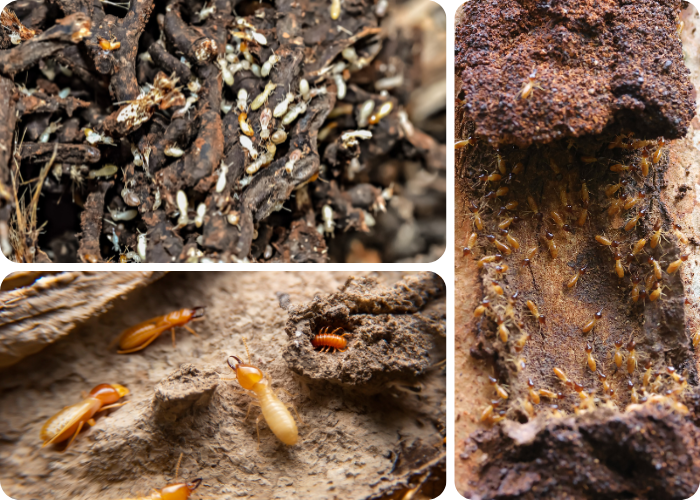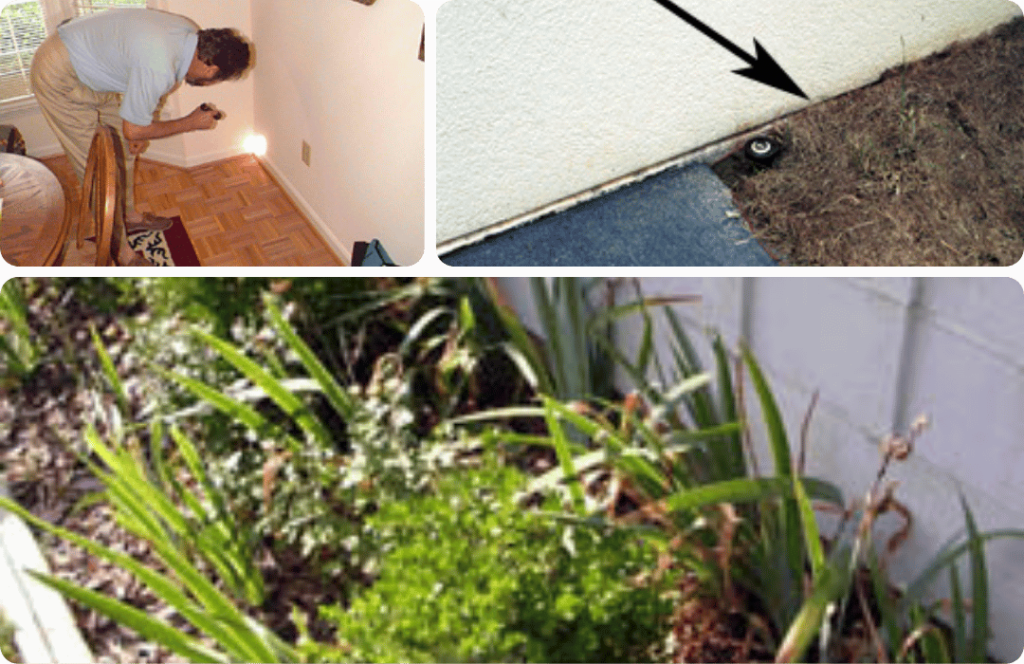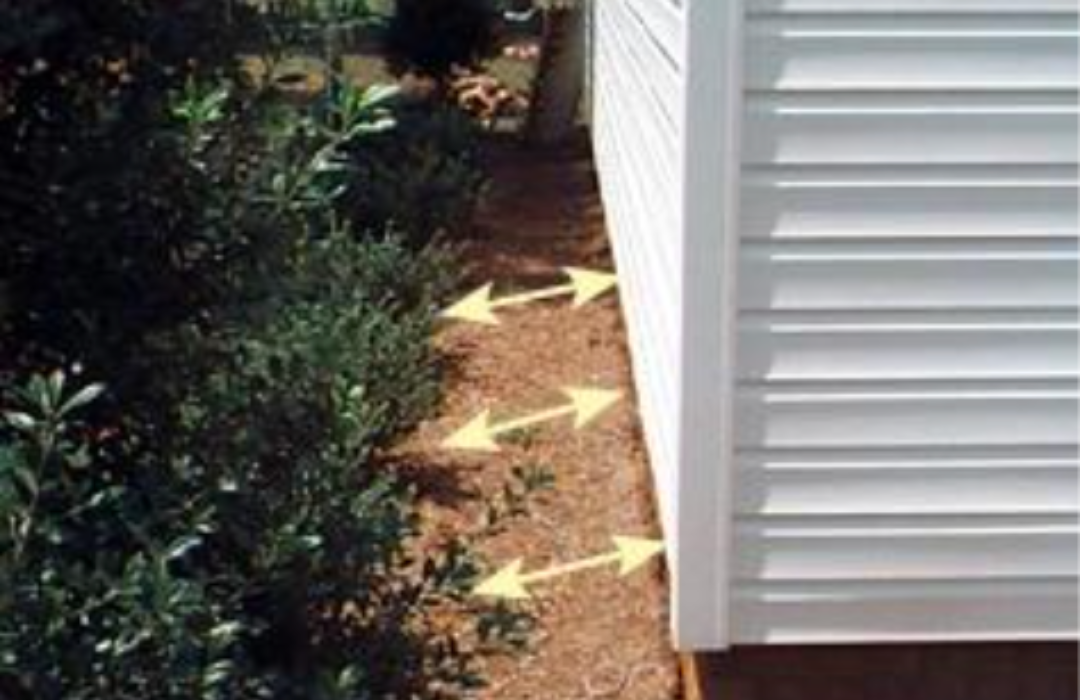Subterranean Termites Control


Subterranean Termites (Family Rhinotermitidae)
Subterranean termites live in underground colonies or in moist, secluded areas aboveground that can contain up to 2 million members. They build distinctive “mud tubes” to gain access to food sources and to protect themselves from open air.
Termite colonies are organized into castes depending on tasks-workers, soldiers, and reproductives. The characteristics of a subterranean termite are dependent on the termite’s role in the colony.
Cream-colored worker subterranean termites are 1/8 to 3/8 of an inch in length. Soldier subterranean termites are of a similar body length but are distinguished by their powerful mandibles. Soldier termites have cream-colored bodies and brown heads. Reproductive subterranean termites are approximately one inch long.
Size: 1/8″
Color: Lite Brown
Legs: 6
Shape: Long, Narrow, Oval
Antennae: True
Habitat: Subterranean termites need contact with the soil to survive and live underground. They can build tunnels through cracks in concrete.
Habits: Subterranean termites live underground and build tunnels, referred to as mud tubes, to reach food sources. Like other termite species, they feed on products containing cellulose. Subterranean termites swarm in the spring — groups of reproductive termites go off to start new colonies.
- Quite often, termite problems encountered by homeowners could have been prevented through sound initial design practices, mechanical alterations or sanitation. The basic premise behind prevention is denying termites’ access to wood. Preventing drywood termite infestation is more difficult than preventing subterranean species as the outside of homes have many sites where termites may enter. However, certain preventative measures can be effective.
- Remove all potential sources of outdoor infestation such as stored lumber, firewood, scrap lumber and dead trees or woody shrubbery. Screen attic or foundation vents with bug screen to exclude drywood termite alates. The screening of vents along with good maintenance of window screens will exclude a multitude of unwanted critters from your home. This may not be practical in areas of high humidity, since it restricts air movement needed to keep attics and subfloor areas dry. However, this is rarely a problem for most of Arizona.
- Drywood termites will not enter wood that has a sound coat of paint. Before painting, seal any cracks, natural checks, construction scars, crevices and joints with wood putty. No effective way has been developed to prevent drywood termites from entering under or through wood shingles.
- Preconstruction planning offers opportunities for preventing termite infestation. Wooden structural members can be soaked in or painted with borax derived wood preservatives. These materials may not penetrate wood deeply, though, so a touch-up will be necessary before closing in the building. Commercially pressure-treated wood is more desirable and may be used as framing members, subflooring, window and doorframes, trim and possibly even wood siding. The extra cost of pressure-treated wood may be justified where termite problems are common.
Post Constructions

Preventing Termites in Existing Homes
Home maintenance and improvements add to the appearance and value of your home. Maintenance is critical to eliminating and preventing conditions that are conducive to termite activity in or around homes. Even the best maintained homes can have termite problems at some point. An inspection by a pest control professional is the best way to head off these problems before they cause serious and expense damage. Even if these inspections are not done annually, you should make it a point to conduct your own "mini-inspections" during routine maintenance chores. A good inspection includes looking not only for termites, but also for conditions conducive to their activity.
Mulches and Landscaping
All mulches, even inorganic ground covers such as gravel or black plastic, help to maintain moist soil conditions and to reduce weeds. Moisture in the soil may attract termites to the area and cellulose-containing mulches may be eaten by termites. This doesn’t mean you should avoid using mulch around your home and in your gardens. Never spread mulch so that it touches the foundation or lowest course of siding on your home. While it may have a nicer appearance this way, it can allow termites to use the cover of mulch to invade your house undetected.
Protect your Siding
Siding should always be at least 6 inches (preferably higher) above the grade or soil line; otherwise, you could have decay problems as well as termite problems. Never allow flower beds and other gardening to cover the siding. Never dig up the soil up within 12 inches of the house. This is the area that was treated for termites. Digging up the soil or putting new topsoil over this area allows termites to bridge the treated soil and access your foundation. You need to be able to inspect the foundation for signs of termite activity.
Plan your Plants’ Future
When planting shrubs, you need to think about how large the plants will be in 10-15 (or more) years not just in terms of their height but also how wide they’ll grow. Do not plant shrubs too close to the foundation. Shrubs that are too close to the house may hide termite (and other pest) activity. Tree/shrub limbs touching the house can damage siding and allow ants and entry point. Prune shrubs to prevent them from blocking airflow through foundation vents.
Inspecting Your Home for Termites – Interior
Check molding and sheetrock for signs of termite activity. Sheetrock and paneling may have a “blistered” appearance and may break open easily where termites have been feeding. You may see brown soil-colored debris on the wall where the termites have chewed through the covering. Tap on the wood with the handle of a screwdriver to listen for “hollow” or damaged spots.
In closets, move boxes that might cover termite activity. In this example, termites came through the baseboard and into some boxes stored against the wall.
- Verified Listing
